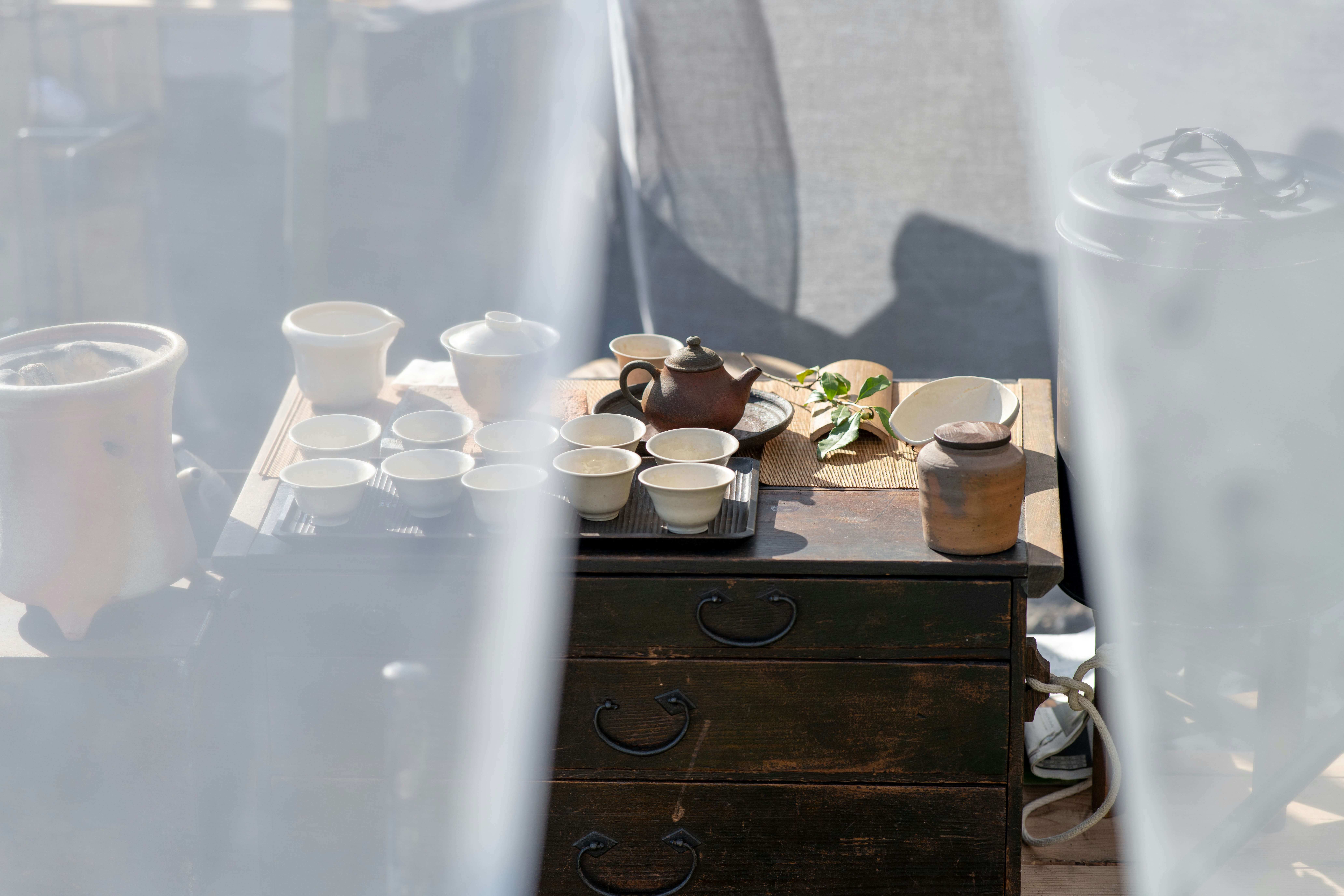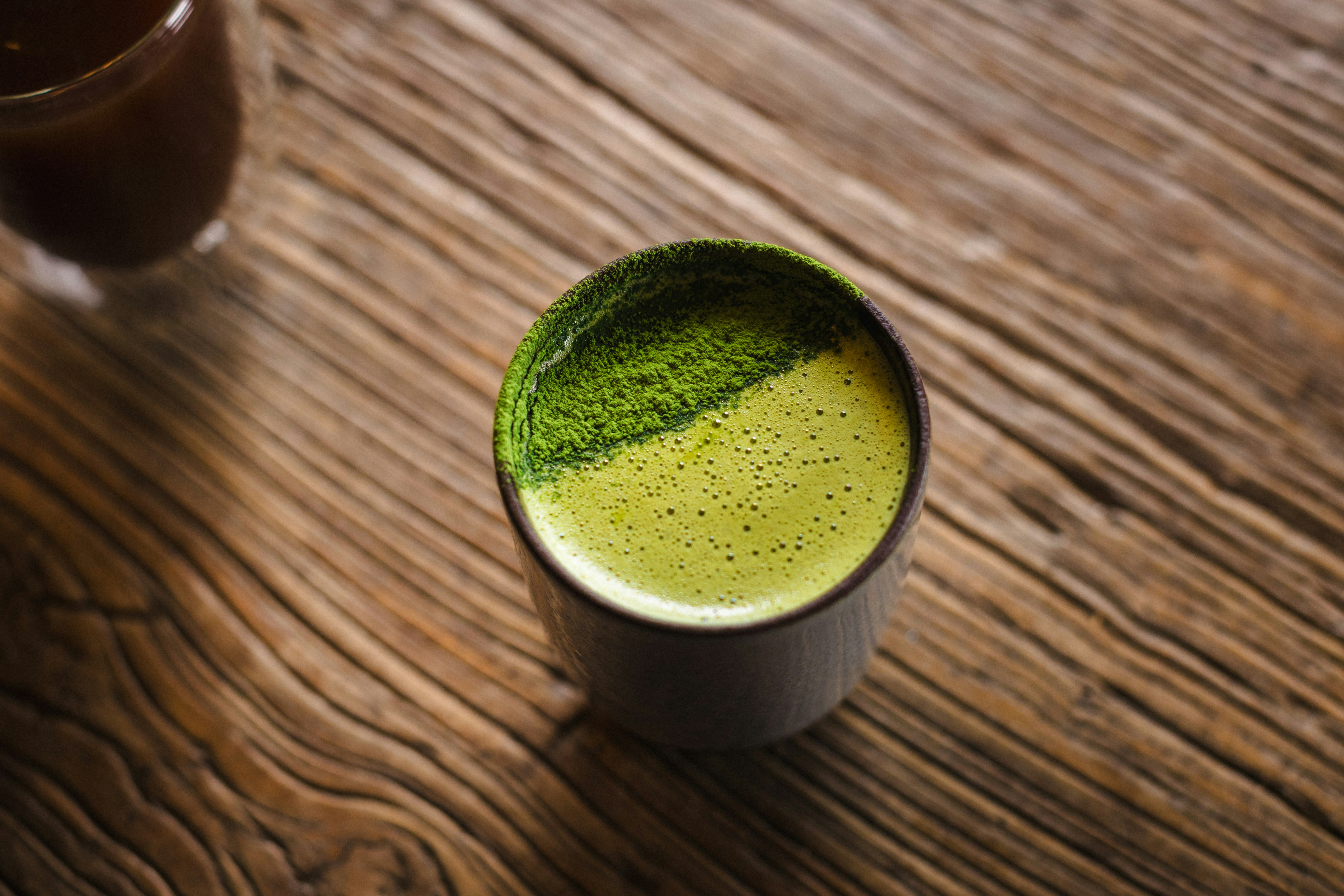Introduction: The Intertwined Worlds of Tea and Meditation
Tea and meditation, seemingly separate practices, share a deep connection rooted in mindfulness and self-awareness. Engaging in these rituals cultivates a heightened sense of presence, enriching both physical and spiritual experiences. Brewing and sipping tea can be a prelude to meditation, creating a serene atmosphere for introspection and tranquility. The act of preparing tea itself becomes a meditative practice, offering an opportunity to slow down and focus on the sensory experiences of sight, smell, and taste, embodying mindfulness.
Tea has been revered not only for its taste and health benefits but also for its ability to promote calmness and clarity. Each step in the tea ritual, from selecting leaves to boiling water, provides an opportunity to be fully present in the moment. Meditation, similarly, encourages inward attention, fostering a connection with thoughts and feelings. Through breath control and concentration, meditation enhances self-awareness and emotional resilience. When combined with the calming effects of tea, these practices synergistically amplify mindfulness. The warmth of the tea and the stillness of meditation create an environment conducive to deeper reflection and self-discovery.
Consider how tea and meditation intersect in your life. Whether it’s a daily cup of tea before meditation or mindful enjoyment of the beverage as a standalone practice, these activities offer an invitation to explore your inner landscape with curiosity and openness. Embracing both tea and meditation can lead to a more profound understanding of oneself, transforming ordinary moments into extraordinary experiences.
A Journey Through Time: The Historical Context of Tea Rituals
Tea rituals have a rich historical significance across diverse cultures and eras. The Japanese Chanoyu, or tea ceremony, emphasizes harmony, respect, purity, and tranquility. This ritual is more than just enjoying tea; it’s a carefully choreographed symphony involving the precise preparation and presentation of matcha, a powdered green tea. Practitioners regard this ceremony as a meditative experience promoting mindfulness and connection with nature.
In China, the Gongfu tea practice embodies a similar philosophy, focusing on the art and technique of brewing tea. This ritual encourages appreciation of the sensory experience of tea, from aroma to flavor, highlighting patience and precision. The word “Gongfu” translates to “skill,” emphasizing the meticulous detail required for an optimal cup. Historically, these tea rituals were not only a means of consumption but also an art form fostering contemplation and a deeper connection to one’s surroundings.
Numerous anecdotes from practitioners illustrate the spiritual implications of these ceremonies. Chanoyu participants often recount transformative experiences, describing how preparing and serving tea allows them to release daily distractions and cultivate inner peace. Similarly, Gongfu enthusiasts share stories about how the meticulous preparation and tasting process induces meditation and tranquility. Tea rituals reflect a rich tapestry of cultural practices aimed at enhancing mental clarity and fostering a deeper understanding of oneself in relation to the universe.
The Benefits of Tea for Mindfulness and Focus During Meditation
Tea is celebrated for its rich flavors and impressive health benefits, particularly in promoting mindfulness and enhancing focus during meditation. L-theanine, an amino acid found predominantly in green tea, induces relaxation without drowsiness, making it easier to enter a meditative state. This compound increases alpha wave production in the brain, contributing to calm and improved alertness. Additionally, tea is rich in antioxidants, which combat oxidative stress and inflammation, factors known to hinder mental clarity and focus. Incorporating tea into a daily routine can enhance cognitive function, allowing for more effective concentration during meditation.
The aroma of tea also plays a crucial role in promoting mindfulness. The ritual of brewing tea involves sensory engagement that heightens awareness and fosters a mindful atmosphere. Scents like chamomile, lavender, or peppermint create a tranquil environment, preparing the mind for meditation. Personal testimonials from meditation practitioners often highlight how sipping tea before or during meditation enhances their experience, as the flavors and aromas ground them in the present moment, increasing calmness and focus.
Overall, the benefits of tea, from L-theanine and antioxidants to aromatic properties, synergistically foster mindfulness and enhance focus, making tea a valuable tool for deepening meditation practice.
Crafting Your Personalized Tea Meditation Ritual: A Step-by-Step Guide
Creating a personalized tea meditation ritual involves steps to create a serene environment conducive to mindfulness and reflection. Start by selecting the right tea. Different teas evoke various sensations and moods. Herbal teas promote relaxation, while green teas are associated with clarity and focus. Choose a tea that aligns with your daily emotional needs and intentions.
Next, create a peaceful environment free from distractions. Cleanse the area by decluttering and add elements like soft lighting, cushions, or calming music. If possible, take your ritual outdoors, where natural surroundings enhance your meditative state.
As you begin the tea-making process, incorporate mindfulness. Be present and aware of each action, from boiling water to pouring tea. Pay attention to the colors, aromas, and textures. Deepen your meditation experience by combining your tea ritual with breathing techniques. As you inhale, visualize peace and calm entering your body, and as you exhale, imagine stress dissipating. Incorporate visualizations, such as envisioning your peaceful setting or the journey of the tea leaves, to enhance this reflective space. Your tea meditation ritual should be a unique reflection of yourself, promoting relaxation and fostering a deeper connection to mindfulness and inner peace.
Mindful Drinking: The Art of Savoring Tea in Your Meditation Practice
Mindful drinking harmonizes with meditation, encouraging full engagement with sensory experiences. This approach cultivates awareness, slowing down to appreciate each detail of the tea-drinking ritual. Savoring the flavors, textures, and aromas enriches the meditation experience, transforming a simple beverage into a profound sensory event. Begin by selecting a high-quality tea that resonates with you, noticing its unique qualities. Before consuming, engage your senses—observe the color, inhale the aroma, and consider the texture of the leaves.
Once brewed, pour your tea and observe the rising steam and deepening color. As you take your first sip, focus on the temperature and texture. Is it smooth or brisk? Sweet or bitter? Paying attention to these nuances cultivates mindfulness, enhancing your meditation practice. Immerse yourself in the sensory details to enter a state of mental presence conducive to deeper meditation. Pause between sips to reflect on the experience and how it aligns with your emotional state. Integrate this mindful approach into your meditation routine to center your mind and foster gratitude for the simple act of drinking tea.
Integrating Tea Rituals into Your Meditation Routine for Enhanced Mindfulness
Incorporating tea rituals into your meditation routine can deepen focus and relaxation. Begin and complete your meditation sessions with a dedicated tea ritual. Mindful tea preparation allows for a transition into a meditative state by focusing on each step. Selecting loose-leaf tea, boiling water attentively, and observing the tea leaves unfold can be a grounding activity, enhancing awareness and paving the way for deeper meditation. During preparation, be present in the moment, observing the colors, shapes, and scents of the tea, fostering a sensory connection that complements your practice. This sets a peaceful tone, clearing the mind of distractions. After meditation, sipping tea symbolizes the closing of the mindful process. Savor each sip, reflecting on your experience and allowing the tea’s calming properties to enhance gratitude and tranquility.
Incorporate tea as a focal point during meditation. While sitting in silence or practicing breath awareness, hold the warm cup and focus on the sensations it evokes. Feel the warmth in your palms, recognize the scents, and observe the rising steam. This conscious engagement with tea anchors your thoughts, maintaining focus and fostering a deeper connection to the present moment. Integrating tea rituals provides a structured yet fluid method to enhance both practices, creating opportunities for reflection, mindfulness, and connection.
Overcoming Meditation Challenges with the Soothing Power of Tea
Meditation, a pathway to tranquility, can present challenges like distractions, inability to focus, and restlessness, hindering progress and leading to frustration. Incorporating tea rituals can mitigate these challenges. Engaging in a tea ritual grounds the mind and body for meditation. Selecting, preparing, and consuming tea can be a meditative practice itself. Mindful attention to each step establishes calm and focus before deeper meditation. The aroma, gentle presence, and act of sipping provide a comforting anchor, making the transition into meditation smoother and more effective.
Many practitioners report that a brief tea ceremony before meditation cultivates mindfulness and dispels distractions. One individual recounted how the perceived calming properties of green tea eased anxiety, allowing for greater engagement in meditation. Such stories illustrate how tea rituals enhance the meditation experience and provide tangible support in overcoming challenges. Integrating tea rituals into meditation enriches the experience and fosters a more focused atmosphere, mitigating distractions, easing restlessness, and promoting mindfulness.
The Spiritual Symbiosis of Tea and Meditation: A Deeper Connection
The intersection of tea and meditation delves into a profound spiritual dimension. Both practices have rich cultural and historical backgrounds emphasizing grounding, connection to nature, and intention-setting, working synergistically to enhance individual practice and overall spiritual journeys. Tea rituals offer moments of peace that draw one closer to the present, fostering a deeper connection to nature. The act of brewing and savoring tea evokes appreciation for the earth’s bounty. The rising steam prompts reflections on the natural world and one’s relationship to it. This connection fosters mindfulness and tranquility, complementing meditation practices and enhancing the ability to attain deeper states of awareness. Grounding is another crucial aspect. The physical act of preparing tea engages the senses, promoting mindful awareness that can lead to emotional stability and clarity. The warm cup serves as a tactile reminder of the present moment, grounding potentially distracting thoughts. Incorporating tea into meditation routines creates a ritualistic approach, allowing practitioners to set intentions that guide their experience. This establishes a sacred space where the dual practice can flourish. Each sip of tea offers an opportunity for pause, reflection, and insights into one’s inner self, making the experience a spiritual journey. Exploring the connection between tea and meditation can uncover layers of understanding that enrich overall practice, inviting a richness that deeply affects lives.
Conclusion: Embrace the Harmony of Tea and Meditation for a Richer Life
Our exploration of tea rituals and meditation has revealed a harmonious relationship that supports and enhances mindfulness practices. Integrating the calming effects of tea rituals with contemplative mindfulness techniques creates a deeper state of awareness and tranquility. Tea preparation and consumption are not only sensory experiences but also meditative practices encouraging presence in the moment. This synthesis fosters a profound connection to one’s thoughts and feelings, enriching the meditation experience. The deliberate actions involved in tea rituals—selecting the right tea, water temperature, and steeping time—promote focus and intention. Sensory engagement through aroma, taste, and warmth anchors attention to the present, reducing distractions. Such practices encourage a reflective mindset and enhance meditation efficacy. We invite readers to embark on their journey of combining tea rituals with meditation, experimenting with different teas and meditation styles to discover personalized practices. Share your experiences and insights, whether you’re a seasoned practitioner or just beginning. By fostering a community centered around mindfulness, we can collectively explore these rituals’ benefits and support each other’s pursuit of greater well-being. Embrace this opportunity to enrich your meditation practice with the simplicity and depth of tea rituals.








Leave a Reply